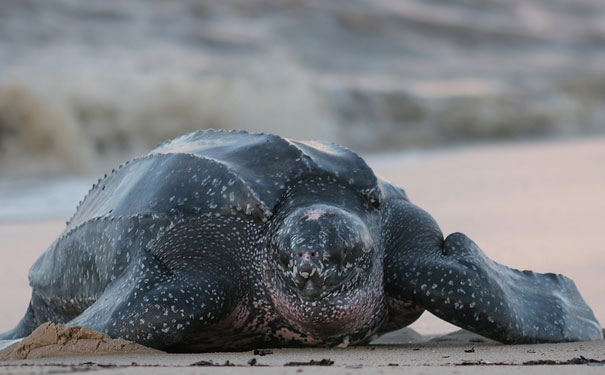
Female giant leatherback turtles may travel over 7,000 kilometres across the Atlantic Ocean. Image: Shutterstock
The giant leatherback turtles travel thousands of kilometres every year between their breeding colonies and feeding grounds across the Atlantic Ocean.
Scientists at the Centre of Ecology and Conservation at the University of Exeter, UK, have tracked these journeys for the first time using satellite navigation.
Leatherback turtle numbers have been declining in the Pacific Ocean, with one nesting colony in Mexico declining from 70,000 in 1982 to a mere 250 by 1998-1999. Egg harvesting, long line fishing and coastal gillnet fishing have been suggested as possible causes and scientists are hoping to prevent a similar decline in the Atlantic Ocean.
The scientists tracked 25 female turtles during the study, allowing them to three major migratory routes- one of which consisted of a distance of 7,563km from Africa to South America across the South Atlantic. Other routes extended from Gabon to the southwest and southeast Atlantic or off the coast of Central Africa.
The female turtles will stay in these areas for two to five years, building up their reserves before making the trek back to Gabon to reproduce.
Until now, no-one has been sure about the journeys the turtles undertake. The researchers hope a better understanding of the migratory routes and foraging of the leatherback turtles will enable them to be protected while at sea.
All of the routes travel through areas of high risk from fisheries. The routes also helped to identify 11 nations that should be involved in the conservation of this species, as well as countries with long distance fishing fleets.
Dr Brendan Godley said in the press release “here’s a concern that the turtles we tracked spent a long time on the High Seas, where it’s very difficult to implement and manage conservation efforts, but hopefully this research will help inform future efforts to safeguard these fantastic creatures.”






